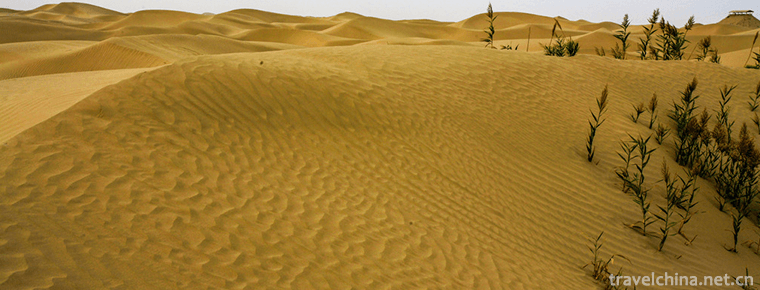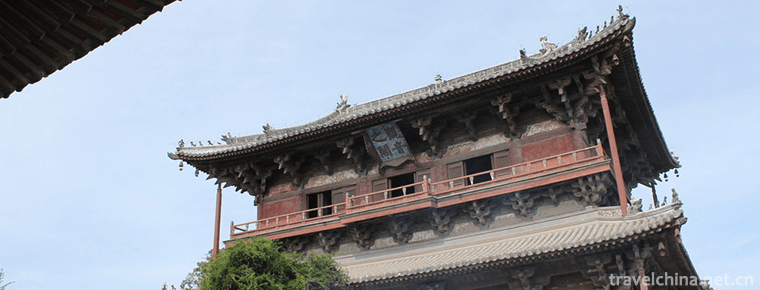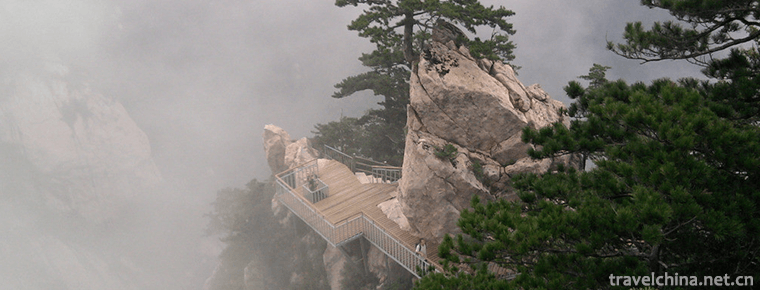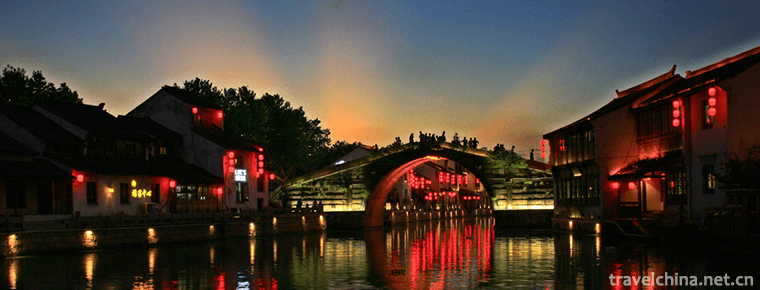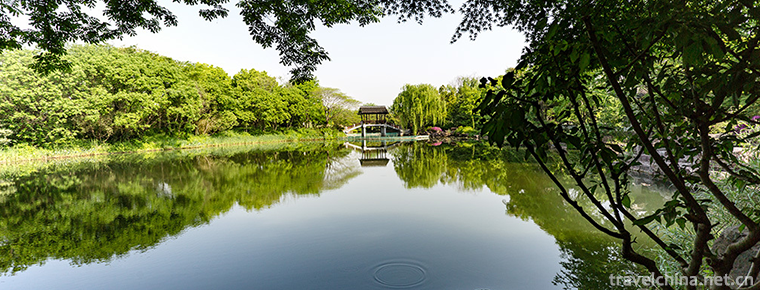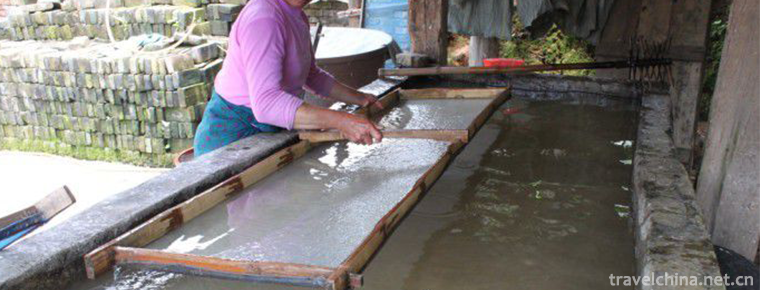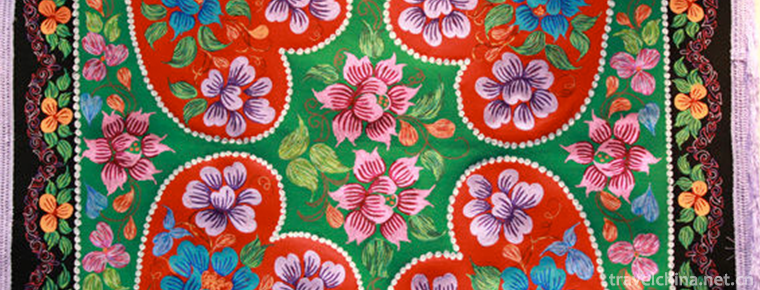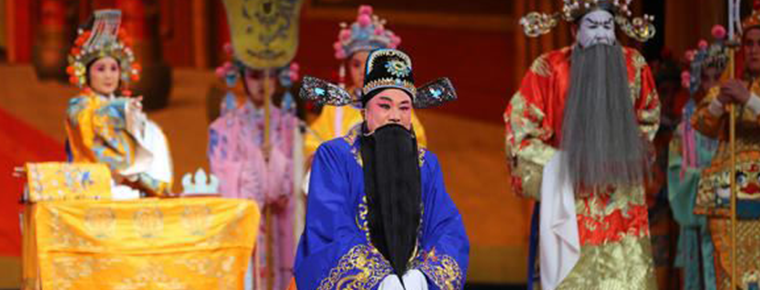The ancient city of Hetuala
The ancient city of Hetuala
The ancient city of Hetuala is located in Yongling Town, Xinbin Manchu Autonomous County, Liaoning Province. It is 5 kilometers west of Qingyongling, the world cultural heritage site and the national key cultural relics protection unit. "Hetuala" is a Manchu language, which means Henggang in Chinese, that is, Pingdingxiaoshan. It is a key cultural relic protection unit in Liaoning Province and a national AAAA-level tourist attraction.
Brief Introduction to the Old City of Hetuala
"Hetuala" is Manchu, meaning Henggang in Chinese. Located in Xinbin Manchu Autonomous County, it is known as the "first capital city of the Qing Dynasty" in the history circle. It was built by Nur Hachi, the Taizu of the Qing Dynasty. The city pool is built on a hill going East-West according to the situation. The steep cliffs, surrounded by water on three sides, are easy to defend and difficult to attack. The interior of the city is high in the South and low in the north, surrounded by high walls. The inner city is Friday and the outer city is ten li. There are nine gates in the ten miles around the city, namely the South three gates, the north three gates, the east two gates and the West one. The Eight Banners elite troops are stationed in the outer city, and there are a number of stations, schools, and warehouse areas. There are Constable houses built outside the city and inside the city. There are many palace buildings in the city, such as Khan palace, eight flag yamen, Guan Yu Temple, Town God's Temple, Qiyun academy, Confucious'temple, etc. The Dayamen of Khan Palace is octagonal, commonly known as the "Golden Ruan Palace".
In 1616, Nurhachi ascended the throne to call Khan and founded the golden kingdom of later Jin Dynasty. In 1619, Nurhachi commanded the Salhu War, which was related to the fate of the Qing Dynasty. It laid a solid foundation for the future competition in the Central Plains and the unification of China. On the west side of Dayamen in Khan Palace, there is a deep pool with broad water and delicate lotus fragrance. Golden carp are all over the pool. On the East side, there is a clear pool under the steep slope. The scenery of Xitan Dongchi is just human. The Dayamen of the Khan Palace is like a dragon head. The two Honghong and Bishui rivers are just like the dragon's eyes. Therefore, they are the epitome of the "Divine Dragon's Two Eyes".
After the Qing Dynasty, in Hetuala, there were also co-leaders'yamen, directors' general judgement yamen, blocking the cabinet words and so on. The city once had a population of more than 100,000, with bustling businessmen and businessmen of ten miles, showing a flourishing scene. After the Qing army entered the customs, Hetuala was called Xingjing, with full-time guardians. However, in the 1904 war between Japan and Russia, the Tsarist army destroyed the ancient city completely, and the original style and features disappeared. Now it has been partially restored. The earth road in the city was replaced by the bluestone road. The preserved ancient elm trees and the newly laid lawn make the whole city pool look both historical and modern. The Dayamen of the Khan Palace has been rebuilt on its original site. The "King's Well of Khan (Rare) which has been praised as"the drinker of thousands of troops and horses"has gone through 400 years of ups and downs.
introduce
ancient city
The old city of Hetuala is an ancient city with a history of more than 400 years. It was built in the 31st year of Wanli (1601) of Ming Dynasty. In the early January of 1616, Nurhachi established the Dajin regime, which was called the Later Jin Dynasty. In the eighth year of Emperor Jin Tiancong (1634), he was honored as "Tianju Xingjing" by Emperor Taiji.
After Jin Guo Du
The old city of Hetuala is famous not only for its birth in Shenzhou, but also for its being the first capital of Manchu. The old city of Hetuala is divided into two cities, inside and outside. Its walls are made of earth, stone and wood. The inner city is 551 meters long in East and west, 512 meters wide in North and south, covering an area of 246,000 square meters, and 2,027 meters in circumference. The main buildings are the Khan palace, the Yamen (commonly known as the Golden Hall), the white flag yamen, the Khan Wang well, the Guan Yu Temple, the Manchu folk house, the former residence of Taks, the Eight Banner yamen, the association of yamen, the Confucious'temple, the Zhao Zhong Temple, Liu Gongci, the Qiyun academy, and Town God's Temple, and a large number of ancient architectural complexes and ruins. The outer city is 1,335 meters east-west, 1,352 meters north-south, covering an area of about 1,559,000 square meters, with a perimeter of 5,230 meters. The main ruins are Mafu, armor factory, sagittal factory, warehouse area and so on. Outside the city (Chinese Manchu Custom Park), there are ancient buildings such as Yougong (Jade Emperor Temple), Tibetan Temple, Manchu Folk Museum, Manchu Old Street, Manchu History and Culture Corridor, Tangzi in the southeast, Jiangtai in the northwest and military academy in the northwest.
Mountain City
The old city of Hetuala is the first capital of the founding of the late Jin Dynasty, the last mountain city in Chinese history, and the most well-preserved mountain city of the Nuzhen nationality. It is the political, economic, military, cultural and diplomatic center of the Later Jin Dynasty. It is regarded as the birthplace of the Qing Dynasty and the cradle of the rise of Manchu. There are seven temples such as the first Guandi Temple and the Confucian Temple in the Qing Dynasty. More than 500 years ago, Khanwangjing was a rare wooden spring well in early Ming Dynasty in China. It pioneered the method of building city by cloth rafters and the system of building capital in the Great Qing Dynasty. It has irreplaceable value in the study of pre-Qing history, art, society, culture and economy.
Travel?
Situated in Xinbin Manchu Autonomous County, Fushun City, Liaoning Province, Hetuala Old Town is adjacent to Shenyang, Fushun, Tieling, Jilin, Tonghua, Dandong, Benxi and other large and medium-sized cities. It has very convenient tourist transportation, beautiful scenic environment, complete functions of food, housing, travel, travel, shopping and entertainment. Under the cover of towering ancient elms, the ancient buildings of green bricks and green tiles have their own style; the performances of songs and dances with strong Manchu customs are continuous and colorful throughout the four seasons, and the gongs and drums of the flourishing times are beating out festivities and auspicious, simulating the grand scene of Noor Hachi Dengji to show the Royal style, and the Manchu wedding custom performances and dances with Manchu characteristics greet the guests of the Eight Parties in a traditional way. In the Manchu Custom Garden, there are lakes and mountains, fish and water games, and the religious activity area near the mountains and rivers has a long history. The Manchu History and Culture Corridor shows the historical picture scrolls of Manchu's prosperity. The Manchu Folklore Museum reproduces the Manchu social customs and folklores. Ginseng, deer antler, mushrooms, fungus, dried fresh wild fruits and other local products and tourist souvenirs are dazzling. There are two-star hotels in the scenic area, Houjin First Capital Hotel. The authentic Manchu "eight dishes and eight bowls" are full of fragrance and good in color and flavor. The unique pre-Qing historic sites and beautiful natural scenery make the scenic spots integrate scenic spots, cultural landscapes, tourist holidays, sightseeing, water amusement, theme parks and man-made scenic spots. With its special historical position in the pre-Qing history, The old city of Tuala is well-known. Emperor Qianlong visited the city eastward, inscribing the poem "Hetualalian Xing Jing, Liao Weicheng according to the mountain tree fence, the autumn wind makes a horse to read, Zhaoji constructs Qinlong Xing". Every year, tourists from home and abroad come to visit endlessly, especially in the annual Manchu customs, tourists like knitting, the scenic area receives more than 500,000 visitors a year.
History
In the 31st year of Wanli in the Ming Dynasty (1603), Nurhachi moved here from the old city of Ferrara. In the 8th year of Jin Tiancong (1634), he was renamed Xingjing, which was also called the old city by later generations. The old city is situated on the left bank hill at the confluence of Suzi River and Erdao River in Bali, southeast of Yongling. There are two cities inside and outside. The inner city is five miles long, with three gates in the south, north and east; the outer city is nine miles long, with three gates in the south, three gates in the north, two gates in the East and one gate in the west. The wall is seven feet high and is made of earth and stone. The families and relatives of Nurhachi live in the inner city, the soldiers of eight banners live in the outer city, and the craftsmen of all kinds live outside the city, with more than 20,000 households.
The existing "Zun Nu Tai" site in Neicheng is the place where Nurhachi called Khan in the forty-fourth year (1616) of Wanli in Ming Dynasty. Zhengbai Qiyamen is well preserved in the east of Inner City. The Guandi Temple, located on the west side of the South Gate, was built during Nurhachi's reign and has been renovated. The imperial temple (Tibetan temple) has been abandoned and only Manchu and Chinese inscriptions, copper bells and foundation stones remain. Ancient well is located in the lowest part of the city, the well water is sweet and endless for many years. It is the only well in the city. So far, the local people are still drinking. The walls and gates of the inner and outer cities are still there, which can still be used for tourists to visit nostalgia.
As the first capital of Houjin, Hetuala has high historical research value and has been listed as a provincial cultural relics protection unit.
Main attractions
Dayamen of Khan Palace
Daya Gate of Khan Palace is octagonal in shape. It is the place where Nurhachi ascended the throne and called Khan. It was built in 1603.
On the first day of the first month of the first lunar month of 1616, Nurhachi ascended the throne here and called him Khan. He established his country as Houjin and his year as destiny.
Nur'harchi strategized here, issued orders, governed the state, studied military aircraft and accepted the surrender, which laid a solid foundation for the march into Liao-Shen unified Northeast Nuzhen.
On April 13, 1618, Nurhachi burned incense with "Seven Great Hatreds" and swore an oath to Varming. The next year (February 1619), the Ming Dynasty sent 80,000 soldiers and horses, known as 470,000 troops, to besiege Hetuala, when Nurhachi had only 60,000 soldiers and horses. After weighing the enemy and ourselves, we should adopt the strategy of "coming by a few routes, I will go only one way" to defeat the Ming Army with fewer wins and more wins. This is the famous Salhu War in history. Nurhachi did not satisfy the present situation after he settled his capital here. He moved to Jiefancheng, Saerhu, Liaoyang in 1621 and Shenyang in 1625. Among these cities, the old city of Hetuala was called the old city.
In the middle of the main hall of the Dayamen Hall of the Khan Palace, Nurhachi ascended the throne of Khan. In front of the throne, Nurhachi read and recited the Dragon script. On both sides of the Dragon script, there are lotus wax tables, smoking stoves and incense pavilions with crane titles. Eight banners were placed on both sides of the throne. In the Late Jin Dynasty, the Eight Banners were not only the flags of eight leaders fighting, but also the eight organizations under Nurhachi's leadership. In 1601, Nurhachi created four banners: yellow, red, white and blue. By 1615, it added four banners, which were set up as eight banners. The Eight Banners'organization had a great characteristic, that is, it could integrate production, regime and military affairs. At that time, Nurhachi was the supreme commander of the Eight Banners. He alone commanded the Zhenghuang and Xihuang flags, while Huangtaiji was the Zhengbai flag. Later, Zheng Huang, inlaid Huang and Zheng Bai became the top three banners, and their status was relatively higher among the eight banners. The eight banners could be left-wing and right-wing. The left-wing was the four banners of Zheng Huang, Zheng Bai, inlaid white and Zheng Blue; the right-wing was the four banners of inlaid Huang, Zheng Hong, inlaid red and inlaid blue. Arranged according to the five elements, the two yellow flags are located in the north and take Tukeshui; the two white flags are located in the East and take Jinkemu; the two red flags are located in the West and take Firekejin; and the two blue flags are located in the south. The position of the Eight Banners can not be reversed. In those years, Nu just sat here and gave orders, accepted Minister Belle's worship, and formulated a series of policies suited to the national conditions and conformed to the people's will, which laid a solid foundation for future marches into the Central Plains.
Khan Palace
The Khan King's Palace is located on the east side of the Dayamen of the Khan Palace. There are four buildings. The east one is the dormitory of the Khan King and his concubine, and the West three are the places where the Khan King holds sacrificial activities.
According to historical records, King and Princess Khan slept in Nankang in winter and in Beikang in summer. There were Kang tables and fire basins opposite Kang where King Khan smoked and tasted tea. In the west, there were Wanzi Kang connected from north to South and west. Manchu called it Tuwa. It had two functions. On the one hand, it could solve the problem of sitting, living and on the other hand, it could heat up through Kang. When you go to a Manchu family, you must remember that you can either sit in Beikang or Nankang, but you must not sit in Xiaokang in the west, because the Manchus usually worship ancestral gods in the west. In order to show respect, you can't put any sundry things on the table, and no one can sit. The yellow cloth on the west wall is called the Yellow Mantle, and below it is the shrine.
The family sacrifices in the Qing Dynasty were divided into morning sacrifices and evening sacrifices. The portraits of Guan Gong were hung in the morning sacrifices. The Manchus regarded Guan Gong as the God of protection, and the God idols of Mother Foto were hung in the evening sacrifices. In the great sacrifices, we must invite shamans, shamans to wear God hats, waist, gods, bells, hands, drums, songs, and dance. At the same time, we must prepare a pure black pig to tie in the God case. After the wine is heated up, we will irrigate the pig ears, and the pig ears will be stimulated by the hot wine. The head will shake violently, and the voice will be heard in the mouth. Clean, cut into square pieces and boiled in two big pots in the north. When boiled, meat was boiled in white water without any condiments. After boiling, meat was served in the trough on the table. After that, people who attended the sacrifices came to eat together and did not touch the condiments when they had eaten in the past.
Zhengbai Qiyamen
Zhengbai Qiyamen is situated on the high platform on the east side of Dayamen in Khan Palace. It is a quadrangle building with green bricks and tiles and hard hills. Zhengbai Banner is one of the top three banners in the eight banners. Zhengbai Banner Yamen is the main office of Zhengbai Banner dealing with military and political affairs. In the past, Emperor Taiji collar Zhengbai Banner. The five existing main rooms are the remains of the original building. The interior was restored to its original appearance in the Ming Dynasty, and the exhibition of Emperor Taiji and Empress Xiaozhuang Wen was held between East and West. Dongxiangfang is a Manchu handicraft exhibition.
Khan Wang well
Khanwangjing is located in the middle of the inner city, south-west of Zhengbai Qiyamen Gang. The well is deep and full of water. It is desirable to lean down. It is clear and clear. It is refreshing and sweet. It is cold in winter and cool in summer. Khan Wang Jing, known as "thousands of troops and horses do not drink". This well is the only one in the old city of Hetuala, which has been used by both military and civilians since ancient times. In this city, Nurhachi was named "Khan King Well" because it was called "Jianyuan Khan". There are many magical legends about this well.
Khanwangjing is slightly rectangular. It is superimposed with colored wood and tussah wood. From the bottom of the well to the ground, the diameter of the well is 1.1 meters, and the diameter of the tartan is 20-30 cm. The head of the well is surrounded by four boards, and the length of the square skirt is 1.21 x 1.3 meters. The skirt is about 30 centimeters above the ground and the thickness of the skirt is about 8 centimeters. It is a very rare ancient wooden spring well in China so far.
Tucker's former residence
Tucker's former residence was the birthplace of Nurhachi, who was born in the front room of a grass house in 1559. The whole building reflects the characteristics of Manchu dwellings, "pocket room, Wanzikang, smoke pipe out on the ground". The pocket room opens the door in the East and walks westward like a pocket. This is mainly to keep the room at a constant temperature. Wanzikang, a Kang connected on three sides of the South and northwest, can not only solve the problem of residents'sitting, sleeping and living, but also raise the indoor temperature through a lot of Kang noodles. "Former residence" shows the daily necessities of the Manchu people in the past. Among them, "three big monsters" are the most distinctive. The first one is that the window paper is pasted outside; the second one is that the children are raised; and the third one is that the big girl holds a cigarette bag.
Confucious'Temple
Confucian temple is one of the seven great temples built in Nuerhachi, Taizu of the Qing Dynasty. It is also called Confucian temple. It is the first Confucian temple in the Qing Dynasty. A Manchu leader was so pious to the cultural predecessors of the Han nationality, whose purpose was to meet the needs of the regime's rule.
In order to accelerate the feudalization of the Jin Dynasty, Nurhachi adopted religious means, widely absorbed and integrated the Han culture of the Central Plains, and highly respected Confucianism and Han culture. The old city of Hetuala was soon built on Gaofu in the southeastern corner of the inner city. The Confucian Temple of that year was magnificent and magnificent. But it was destroyed in the war. The temple we saw was rebuilt on its original site in 2002. Dacheng Hall is the main building of the Confucius Temple. It is worshiped by Confucius, the most saintly ancestor, with twelve sages, such as Fu, Shu, Zong, Yasi Saints, Min and Ran. The Eastern and Western Chambers worship 77 ancient Confucians and 79 sages. There are three sacred shrines behind Dacheng Hall to worship ancestors. There are 77 ancestors of Confucianism and 79 sages. The Confucian Temple has made immortal contributions to Manchu's absorption of Han culture. In those days, celery baths were brilliant, bells and drums sang together, cigarettes burned around, and good men and women worshipped endlessly.
Pujue Temple (Guandi Temple)
Located about 20 meters west-north of Nanmenli Road in the old city of Hetuala, it was built in the forty-third year of Wanli in Ming Dynasty (1615). It is one of the seven great temples in the early Jin Dynasty, the first Guandi Temple in the Qing Dynasty, and one of the main existing ancient buildings in the old city of Hetuala. It reflects the religious beliefs and architectural art, painting art, sculpture art characteristics and cultural connotation of the Manchu people, and has high historical, scientific and artistic value.
Miaoyuan is 35 meters wide in East and west, 51 meters long in North and south, covering an area of 1,785 square meters. In the second courtyard, the original buildings are Ma Dian (mountain gate), Bell and Drum Tower, Guan Di Dian, East and West auxiliary rooms (lecture hall, kitchen, sitting hall), Buddhist Hall, East and West Zen Hall, with an area of 593.43 square meters. There are flagpole stones in front of the mountain gate.
Ma Dian, that is, Shanmen, hard Mountain-style green brick building. It is 8.5 meters wide, 6.5 meters deep and has a building area of 55.25 square meters. The Ming Dynasty is a hall gate, the East and West are Guanyu mounts, and the top of the hall has beast-kissing ornaments. There are two corner gates on both sides of the temple.
Bell and Drum Tower, located in the southeast and southwest corner of the Miaoyuan, Xieshan Square Building, 4.85 meters long side, with an area of 23.52 square meters. Bell Tower in the East and Drum Tower in the west.
Guandi Hall, located in the middle of the front yard, is 10.90 meters wide and 10.20 meters deep, with an area of 111.18 square meters. Hard hill type green brick building, the top of the temple has beast-kissing ornaments, there are front and rear corridors, three-step vertical steps, 9.6 meters east and west of the base, 10 meters north and south. In the palace, Guan Yu, who is a salary donor, has to hold military books and sitting statues. In the east, Ma Liang and Guanping were sculpted, while in the west, Ji and Zhou Cang were all standing statues.
East-West matching rooms are located in the East-West compartments in front of Guandi Hall, each with three hard mountain buildings. It is 11 meters wide, 6.5 meters deep and 71.50 square meters in floor area. East is kitchen and guest room, West is lecture hall.
The Buddha Hall is the last floor of the hall. It was built in 1768 in the thirty-third year of Qianlong Emperor. It has a hard Hill style green brick building with beast-kissing ornaments on the top. Five rooms are 17.60 meters wide, 9.20 meters deep and 161.92 square meters in floor area. There is a front porch and a back porch. In the Ming Dynasty, Sakyamuni Buddha was offered to shape Manjusri and Puxian Bodhisattva; in the Eastern Dynasty, Guanyin was moulded; in the Western Dynasty, the King of Tibet was moulded. The East and West are separated by walls, with nine holy gods in the East and eighteen Arhats in the East and three Xiaoniang in the west.
Zen Hall, on the East and west sides of the front of the Buddhist Hall, was built in the 33rd year of Qianlong (1768) and built with green bricks and tiles in Hard Mountain. It is 2 rooms 5.6 meters wide, 6.7 meters deep and 37.52 square meters in floor area.
In 1986, provincial and municipal funds were allocated to repair and restore the original appearance. There are five halls in the rear Hall of Daxiong. They are made of sculptures: Sakyamuni in the middle, Pharmacist Buddha in the left, Amitabha Buddha in the right, Guanyin Bodhisattva in the east, and King Tibetan Bodhisattva in the west. The statues of the five Buddhas are golden and shining. All the buildings of the temple have been renovated and all the gates and courtyard walls have been newly built, making it one of the important places for Buddhist activities in eastern Liaoning Province.
Shenlong two mesh
On the west side of Dayamen in Khan Palace, there is a deep pool with broad water and delicate lotus fragrance. Golden carp are all over the pool. On the east side of the steep slope, the water is sparkling and the fish and the lotus are winning. The scenery of Xitan Dongchi is pleasant. The Dayamen of Khan Palace is like a dragon head. The two Honghong and Bishui rivers are just like the dragon's eyes. Therefore, it has the reputation of "Divine Dragon's Two Eyes".
Kai Yuan Academy
Located on the west side of the Confucian Temple, Qiyun Academy was the first government-run school in the Qing Dynasty. It trained a large number of entrepreneurship elites for the later Jin Dynasty and the early Qing Dynasty. At that time, the Academy had a high level of teachers, who were personally taught by celebrities of the Qing Dynasty, such as Heng Zhiyuan in Shengjing, Lu Jinren in Anhui, etc. Eight Banners'children and Han and Mongolian children rushed to school, but the Academy was destroyed in the Japanese-Russian War in Guangxu 21. Nowadays, the schools, teachers'rooms, study rooms and dining rooms we see are all the historical origins of the county Party committee and government's recovery in 1999.
Emperor Temple
The imperial temple is the imperial temple, which refers to the Tibetan temple and the Xianyou Palace. Dizang Temple and Xianyou Palace are two of the seven great temples in the late Jin Dynasty.
Tibetan temple
Dizang Temple is a famous Buddhist holy place in Liaodong area in Qing Dynasty. The late Qing Dynasty and Xianyou Palace were destroyed in the war between Japan and Russia at the same time. They were restored to their original state in 1998. The main buildings of the Tibetan Temple are the central hall of the mountain gate, the rear hall and the East-West matching hall, the bell tower and the drum tower. The central hall is the "Great Hall of Majesty" with Sakyamuni at the center, Manjusri Bodhisattva at the left and Puxian Bodhisattva at the right. Sakyamuni's front and bottom left is Kaya, right is Ananda. Eighteen Arhats are made of East and West. The King of Tibet worshipped in the rear hall. The left side of the Bodhisattva of Tibet is Daoming, the right side is Mingong, and the East and West are ten halls of Yanjun and Niutou Horse Noodles. Dongpai Hall is a hall for prolonging longevity. It is a hall for auspicious and wishful cultivation of morality and prolonging longevity. The Xipai Hall is a hall of merit and virtue, where Amitabha Buddha, Guan Shiyin Bodhisattva and Majesty to Bodhisattva are offered as places of transcendence for the dead. The reason why Nurhachi built the Tibetan Temple was mainly to safeguard the need of his rule.
Xian you gong
Xianyou Palace is located on the west side of Dizang Temple. It is a very famous Taoist Temple View in eastern Liaoning in Qing Dynasty. It contains Yuhuang Pavilion, Dragon and Tiger Palace, Sanguan Palace, Rongjian Stele, Xiangting Pavilion and so on. It is a binary architecture complex with simple and elegant architecture, full of spirit and brilliant paintings. When it was first built, it was called Yuhuang Pavilion. It was rebuilt in 15 years in Shunzhi and renamed Xianyou Palace. Inside the Dragon Tiger Hall, the gods of Mengzhang (Qinglong God) and the guardian (Baihu God) are installed as the gods of Taoist temples guarding Taoist and mountain gates. Taoism takes Qinglong, Baihu, Suzaku and Xuanwu as its guardian gods. It is called the Four Directions and Four Gods. It is widely used in the army formation and regarded as the protection god of the army. The reason why Nurhachi built this palace was that he wanted to pray for the gods to bless his eight-flag troops and win all battles.
Tizang Temple and Xianyou Palace are only one way apart. This kind of Buddhism and Taoism live side by side, which is rare in China. "Eight sceneries of Xingjing" were recorded in "Records of Xingjing County", one of which is "the late bell of the imperial temple". The sun is setting in the west, the imperial temple Pavilion is half hidden, the ancient trees are towering, and the clear bells are ringing in the woods...
Museum
Manchu Folklore Museum is the first museum in China to display Manchu Folklore. It was built in 2000 and opened to the outside world in 2002. It is situated on the Bank of Hecheng Lake with beautiful scenery and adjacent to Xianyou Palace and Tibetan Temple of the Royal Temple of Houjin. The Museum mainly displays unique Manchu historical folklore and cultural relics.
Cultural promenade
Manchu History and Culture Corridor, located in the beautiful Chinese Manchu Custom Park, was built in 2002, is the longest semi-closed fresco corridor in China. The corridor is 560 meters long and covers an area of 2,600 square meters. It has 503 pictures. Including the origin of Manchu, the unification of Nvzhen ministries, the rise of Nurhachi; the establishment of the Qing Empire, the entry of the Qing Army, the unification of the whole country, the demise of the Ming Dynasty. It shows Nurhachi's great achievements in his life and the magnificent historical picture of Manchu's development.
Manchu old street
Manchu Old Street is situated in the southeast of Hetua Outer Town with a total length of more than 150 meters. It is a market place for merchants and Nuzhen of Jianzhou in the later Jin Dynasty. At present, it is the largest commercial activity area in the scenic area of the old city of Hetuala, which integrates food, housing, transportation, travel, shopping and entertainment. There are many plaques on both sides of the street, with flags flying. Teahouses, restaurants, leather stores, horse tools stores, fish farms, rice shops, Manchu pharmacies, silk and satin stores, religious goods stores, blacksmiths, grocery stores, horse markets are very busy. There are wild mountain goods, pine seeds, mushrooms, pears, mountain red, hazelnuts and walnuts, and Manchu snacks are all available. Shops are crowded, peddlers are bustling, and the shouting is repeated.
The Old Site of Hetuala
Hetuala, located 4 km southeast of Yongling, Liaoning Province, means "Henggang" in Manchu. In the 31 years (1603) of Wanli in Ming Dynasty, Nurhachi moved here from the old city of Ferrara. In the 8 years (1634), later Jin Tiancong was renamed Xingjing. As the first capital of later Jin Dynasty, Nurhachi has high historical research value.
Practical information
Admission ticket
Adult tickets are 60 yuan; children under 6 years of age (including 6 years of age) and children under 1.3 meters of height and elderly people over 70 years of age are exempt; minors under 6 years of age (excluding 6 years of age) - 18 years of age (including 18 years of age) and elderly people aged 60-69 years are 30 yuan.
Opening Hours
The peak season (April 1-October 31) is from 8:00 to 17:00; the off season (November 1-March 31) is from 8:00 to 16:00.
Traffic information
Internal traffic
Public transportation
Take buses from Shenyang or Fushun to Yongling Town, Xinbin, and take small buses for about five kilometers.
External traffic
Self driving
1. Tonghua City-Tonghua County-Qingmen-Gangshan Forest Park-Xinbin County-Hetuala City.
2. Shenyang-Fushun-Nanzamu Town of Xinbin County-Muqi Town-Monkey Stone Forest Park-Qiyunshu-Harmony Forest Park-Qingyongling-Hetuala City.
3. Benxi City-Benxi County-Alkali Factory-Weiziyu Town of Xinbin-Hetuala City.
4. Tieling City - Zamu Town, New Binnan - Muqi Town - Qiyunshu - Monkey Stone Forest Park - Suzi River Gule Drift - Harmony Forest Park - Yongling Qing - Hetuala City.
Train
Take a train from Shenyang or Fushun to Yongling Town, Xinbin, and then take a passenger to the old city of Hetuala.



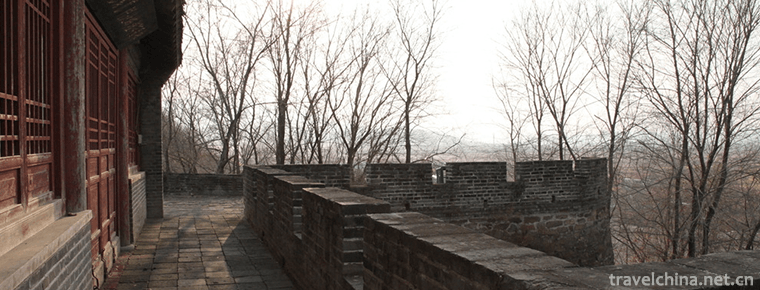
-
Dawakun Desert Tourist Scenic Area
Dawakun tourist scenic spot is located in Tielimu Township, Yuephu County, 6 kilometers away from 310 provincial roads and 110 kilometers away from Kashgar City, with convenient transportation. It is .
Views: 112 Time 2019-01-06 -
Tianjin Dule Temple
Dule Temple, also known as the Great Buddha Temple, is located in Jizhou District, Tianjin, China. It is one of the three remaining temples of Liao Dynasty in China and one of the famous ancient build.
Views: 187 Time 2019-01-08 -
Guilin Yaoshan Scenic Area
Yaoshan is located in the eastern suburb of Guilin City, 8 kilometers away from the city center. The main peak is 909.3 meters above sea level and 760 meters above sea level. It is the highest peak in.
Views: 150 Time 2019-01-13 -
Jinhu Yang National Forest Park
Zepujin Lake Yang National Forest Park is located 40 kilometers southwest of Zepu County in the Gobi Depth, located in the upper edge of the Yerqiang River alluvial fan.
Views: 297 Time 2019-01-23 -
Qingming Bridge Ancient Canal Scenic Area
Qingming Bridge Ancient Canal Scenic Area is located at the southern end of Wuxi city center, covering about 44 hectares of scenic area. The scenic spot is composed.
Views: 161 Time 2019-02-07 -
Stone Old Man Sightseeing Park
Shilao Sightseeing Park is located in Qingdao City to Laoshan Scenic Area, east of the fishing banquet in the Tang Dynasty, with an area of 1200 mu. Starting at the end of 1999.
Views: 202 Time 2019-02-08 -
Xixi Wetland Tourist Area
Xixi National Wetland Park is located in the west of Hangzhou City, Zhejiang Province. It is only 6 kilometers away from Wulin Gate, the main city of Hangzhou, and 5 kilometers away from West Lake..
Views: 126 Time 2019-02-25 -
Manufacturing Techniques of Tussah Paper
The manufacturing history of tussah paper is as long as that of linen paper. The raw material for making the paper is the phloem fibers of the tree. The bark of the tree contains wood phloem fibers wh.
Views: 182 Time 2019-04-18 -
Kazakh felt embroidery and cloth embroidery
Kazakh folk traditional felt embroidery and cloth embroidery handicraft are mainly spread in Xinjiang Kazakh soft residential areas, such as the Sixth Division Red Banner Farm.
Views: 339 Time 2019-05-02 -
Huai Bang
Huai Bang (also known as Huai Diao, commonly known as Huai Qing Bangzi, Lao Huai Bang, Xiao Bang Opera and Xiao Ban Opera), is one of the traditional local operas in Henan Province and one of the nati.
Views: 93 Time 2019-05-04 -
Chengdu University of Information Technology
Chengdu University of Information Engineering is a provincial general undergraduate college jointly established by Sichuan Province and China Meteorological Bureau and the key development of Sichuan P.
Views: 249 Time 2019-08-31 -
Deyang medical and health
By the end of 2018, Deyang City had 2819 health institutions (including village clinics), including 7 centers for Disease Control and prevention, 7 health supervision institutions, 1 Emergency Center (station), 6 maternal and child health centers, .
Views: 319 Time 2020-12-14
